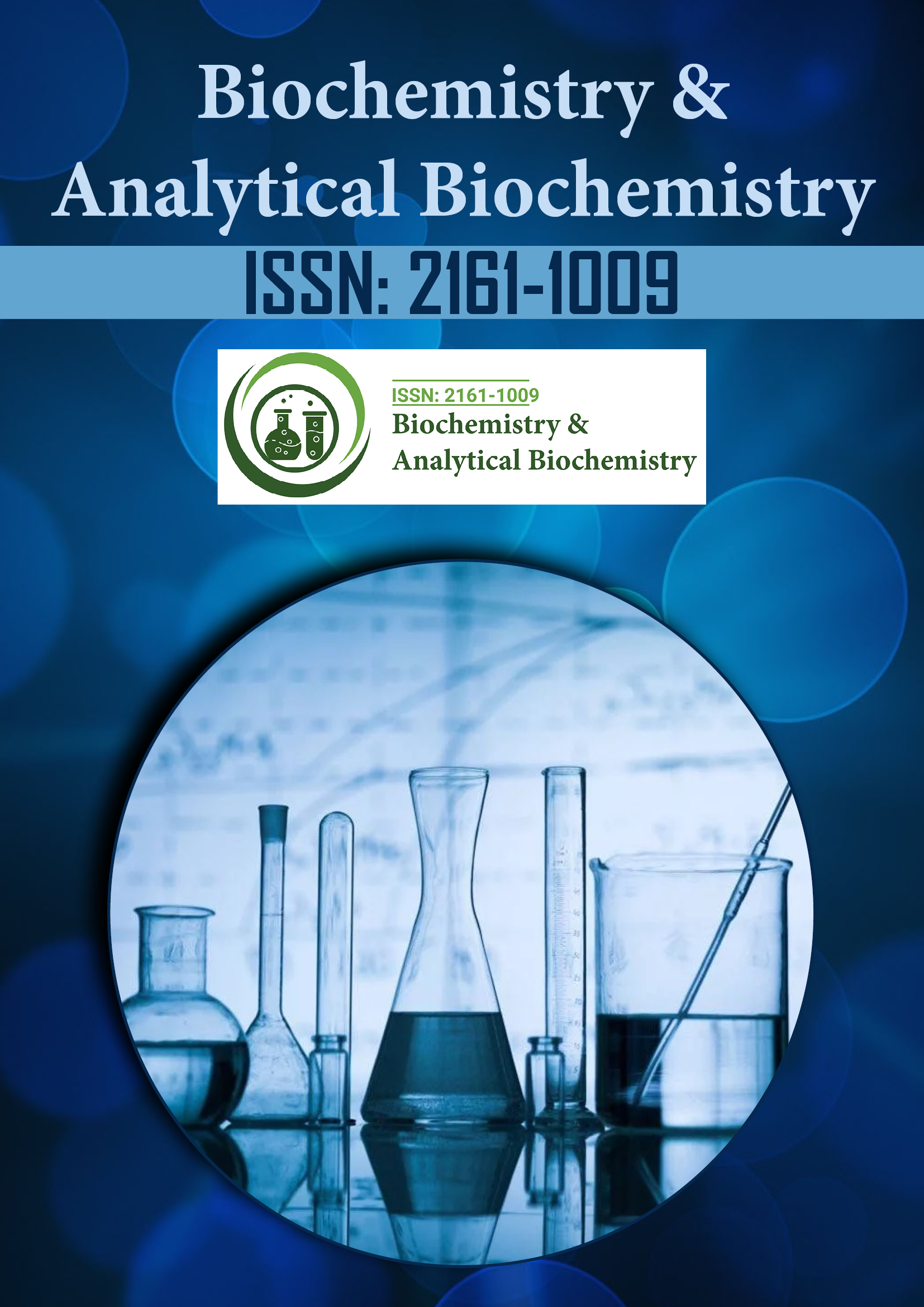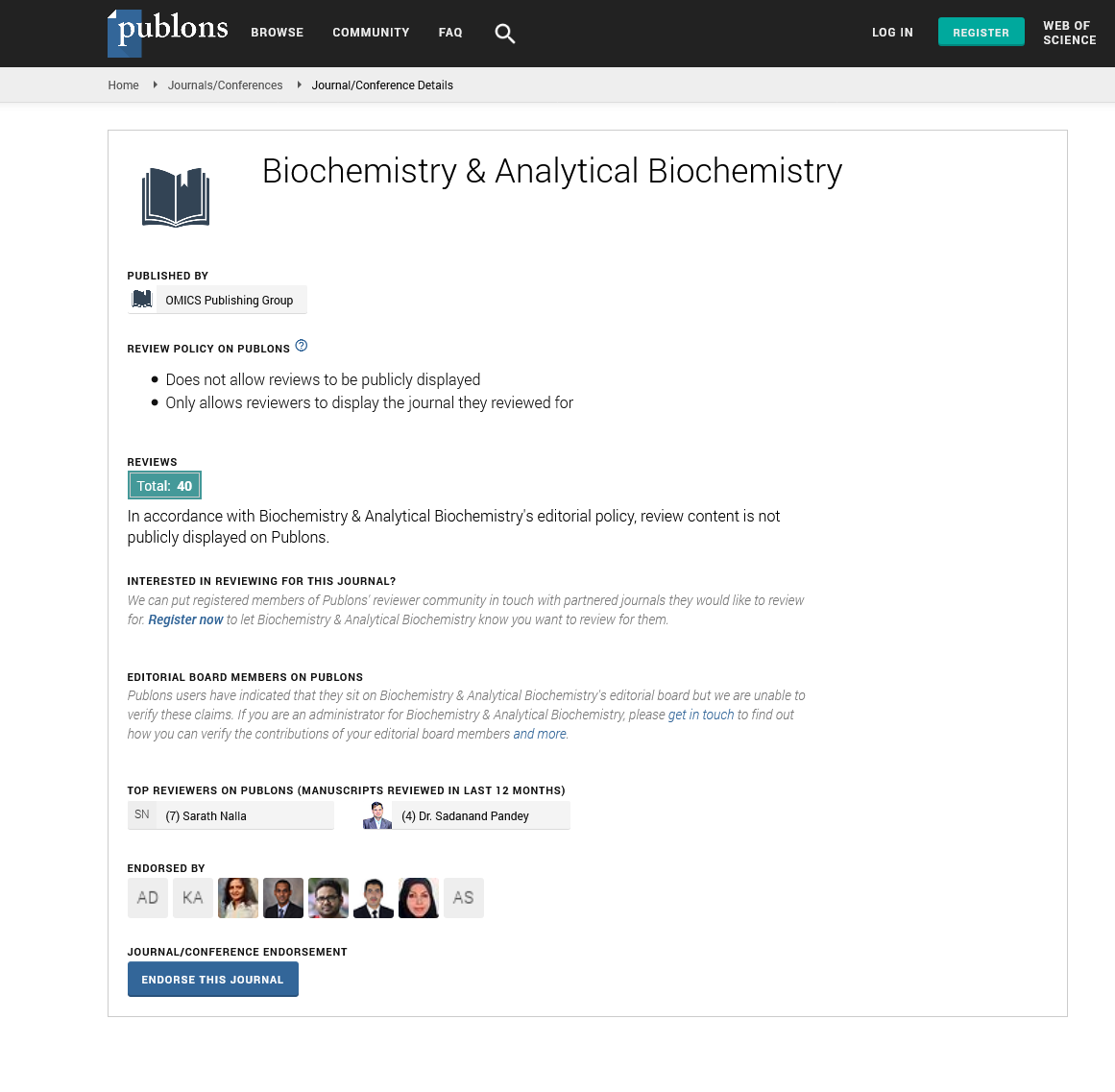Indexed In
- Open J Gate
- Genamics JournalSeek
- ResearchBible
- RefSeek
- Directory of Research Journal Indexing (DRJI)
- Hamdard University
- EBSCO A-Z
- OCLC- WorldCat
- Scholarsteer
- Publons
- MIAR
- Euro Pub
- Google Scholar
Useful Links
Share This Page
Journal Flyer

Open Access Journals
- Agri and Aquaculture
- Biochemistry
- Bioinformatics & Systems Biology
- Business & Management
- Chemistry
- Clinical Sciences
- Engineering
- Food & Nutrition
- General Science
- Genetics & Molecular Biology
- Immunology & Microbiology
- Medical Sciences
- Neuroscience & Psychology
- Nursing & Health Care
- Pharmaceutical Sciences
Perspective - (2025) Volume 14, Issue 2
Protein Folding and Misfolding: From Fundamental Biochemistry to Clinical Relevance
Michael Russo*Received: 30-May-2025, Manuscript No. BABCR-25-29497; Editor assigned: 02-Jun-2025, Pre QC No. BABCR-25-29497 (PQ); Reviewed: 16-Jun-2025, QC No. BABCR-25-29497; Revised: 23-Jun-2025, Manuscript No. BABCR-25-29497 (R); Published: 30-Jun-2025, DOI: 10.35248/2161-1009.25.14.581
Description
Protein folding represents one of the most fundamental processes in biochemistry, transforming linear polypeptide chains into specific three-dimensional structures that determine biological function. The correct folding of proteins is not random but directed by the amino acid sequence and influenced by cellular factors such as chaperones, ionic conditions, and molecular crowding. Proteins fold into native conformations that minimize free energy, a principle described by the folding funnel model. However, the complexity of folding pathways, combined with environmental stresses and genetic mutations, can result in misfolding, leading to aggregation and disease. Understanding the delicate balance between folding and misfolding is crucial for both basic science and clinical medicine.
Molecular chaperones are critical guardians of the folding process. They do not provide information for folding but instead prevent misfolding and aggregation by stabilizing intermediate structures. Heat shock proteins, such as Hsp70 and Hsp90, play essential roles in maintaining proteostasis under stress conditions. The endoplasmic reticulum also serves as a specialized folding environment, with chaperones like BiP ensuring the maturation of secretory and membrane proteins. When folding fails, cells activate quality-control systems such as the unfolded protein response and the ubiquitin-proteasome pathway, which target misfolded proteins for degradation. These processes highlight the sophisticated biochemical machinery dedicated to preserving protein integrity.
Misfolded proteins can adopt toxic conformations, often forming insoluble aggregates such as amyloid fibrils. Amyloid formation is a hallmark of several neurodegenerative diseases, including Alzheimer’s, Parkinson’s, and Huntington’s disease. In Alzheimer’s, amyloid-beta peptides misfold and aggregate into extracellular plaques, while tau proteins misfold into neurofibrillary tangles that disrupt microtubule stability. In Parkinson’s, alpha-synuclein aggregates impair synaptic function and dopamine transmission. These aggregates interfere with cellular homeostasis by sequestering essential proteins, disrupting membranes, and impairing mitochondrial function. Prion diseases provide a striking example of misfolding pathology, as misfolded prion proteins act as templates that induce conformational changes in normal proteins, propagating disease through a self-amplifying cycle.
Analytical biochemistry has been central to advancing our understanding of protein folding and misfolding. Techniques such as circular dichroism spectroscopy, X-ray crystallography, and Nuclear Magnetic Resonance (NMR) spectroscopy have long been used to investigate protein conformations. More recently, cryo-electron microscopy has provided high-resolution structures of protein aggregates, offering unprecedented insight into amyloid fibril architecture. Computational methods, including molecular dynamics simulations and AI-driven predictions like AlphaFold, now allow scientists to model folding pathways with remarkable accuracy, bridging experimental and theoretical perspectives.
The clinical implications of protein misfolding are profound. Protein misfolding diseases, collectively known as conformational disorders, are not limited to the nervous system but also include conditions such as cystic fibrosis, caused by misfolding of the CFTR chloride channel, and type II diabetes, where misfolded islet amyloid polypeptide contributes to beta-cell failure. Therapeutic strategies to combat misfolding disorders include small molecules that stabilize native protein structures, known as pharmacological chaperones, and drugs that enhance protein degradation pathways. Monoclonal antibodies targeting misfolded species are under development for Alzheimer’s and Parkinson’s, aiming to neutralize toxic aggregates. Gene therapy approaches are also being explored to correct mutations that predispose proteins to misfolding.
Beyond disease, protein folding has important implications for biotechnology and industrial biochemistry. Recombinant protein production, widely used for therapeutic proteins and enzymes, often encounters challenges with misfolding and aggregation, leading to inclusion bodies in bacterial systems. Optimizing expression hosts, co-expressing chaperones, and employing refolding strategies are crucial for obtaining functional proteins. In synthetic biology, controlling folding is essential for designing proteins with novel functions, such as enzymes with altered specificity or stability for industrial applications.
The study of protein folding and misfolding demonstrates how fundamental biochemical principles intersect with practical challenges in medicine and biotechnology. Folding is influenced by the intrinsic properties of amino acid sequences but is also shaped by the cellular environment and evolutionary constraints. Misfolding underscores the vulnerability of this process, with devastating consequences when quality-control systems fail. At the same time, the remarkable adaptability of folding pathways provides opportunities for therapeutic intervention and technological innovation.
Citation: Russo M (2025). Protein Folding and Misfolding: From Fundamental Biochemistry to Clinical Relevance. Biochem Anal Biochem. 14:581.
Copyright: © 2025 Russo M. This is an open access article distributed under the terms of the Creative Commons Attribution License, which permits unrestricted use, distribution, and reproduction in any medium, provided the original author and source are credited.

